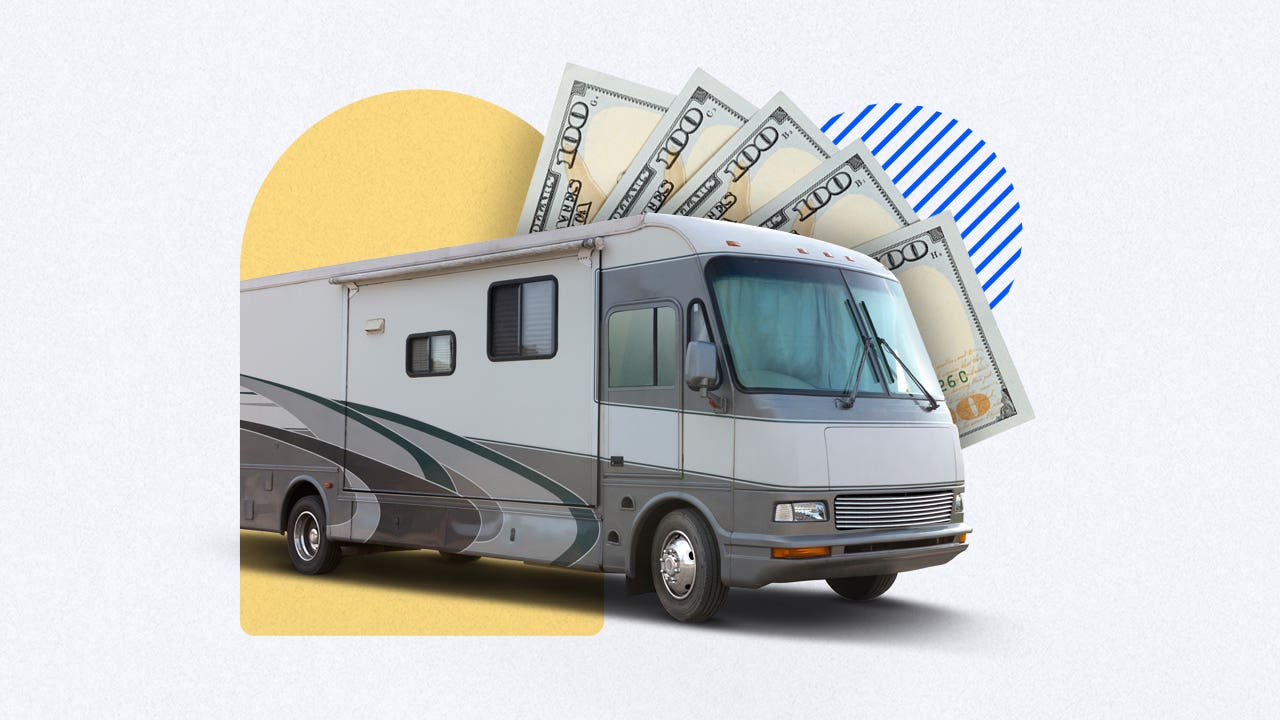How to choose the best RV loan lender for you

The Bankrate promise
At Bankrate we strive to help you make smarter financial decisions. While we adhere to strict , this post may contain references to products from our partners. Here's an explanation for .
Key takeaways
- When gauging approval, RV lenders consider credit score, income and debt-to-income ratio (DTI).
- Get prequalified with several lenders and compare potential offers before applying.
- Look into the benefits each lender offers to help narrow your search.
Driving a shiny new RV is much more exciting than researching loan options. However, if you’re like most buyers, you can’t have one without the other and must prioritize finding the best RV loan lender for your financial situation.
Although there is no single “best RV lender” out there, there are companies that will better fit your needs and finances. When comparing companies, prequalify with as many as possible and pay attention to the lender’s usage restrictions, the eligibility criteria and the loan details.
What to consider before choosing an RV lender
To choose the best RV loan, you’ll need to consider the specifics of both the lender and the loan product. Just as you would with an auto or personal loan, conduct thorough research to find both the most competitive rates and the lender that best meets your needs.
Also, remember that RV loans are often much larger than other loan types (depending on your vehicle and down payment amount). RV loan terms last five to 15 years, meaning the payment will be part of your monthly budget for years to come.
Secured vs. unsecured
With a secured loan, the RV you’re purchasing is collateral for the loan. That means the lender can seize it if you default on the loan.
Many lenders offer one type or the other. You’ll likely see secured loans offered through dealerships, while most personal lenders offer unsecured loans.
Secured loans typically come with lower interest rates. Unsecured loans may have fewer restrictions about use plus the reassurance that you won’t automatically lose the vehicle if you fall behind on payments.
Make sure the lenders you consider offer the loan type you prefer.
Loan approval requirements
To get an RV loan, you’ll need to meet the lender’s qualifications. Each lender sets its own. Lenders will likely take your credit score and history, as well as your income and debt-to-income (DTI) ratio, into consideration for approval.
These factors also impact your loan terms and the rates you’re offered. The better your credit score, the lower your interest rate.
While bad credit lenders exist, the loans are more likely to come with inflexible payment terms and high interest rates.
Available interest rates
The rates that are disclosed on the lender’s website aren’t always guaranteed. Before choosing a lender because of a particularly low annual percentage rate (APR), prequalify (if the lender offers the tool) to see your predicted rate. Keep in mind that the smallest APR is reserved for the most creditworthy borrowers.
Also, ensure that the interest ranges disclosed aren’t promotional or for a set amount of time. To better understand the rate you could be offered, read the lender’s terms and conditions page or call a customer service representative.
Make sure you understand every cost associated with the loan. Look for additional costs like origination fees, late fees and prepayment penalties.
Lenders have different fee structures, and they’ll often be based on credit. For example, the better your credit, the lower your origination fee could be.
Loan amounts
Before comparing the best RV lenders, it’s important to know how much money you will need to purchase your RV. Recreational vehicles can range widely in cost, anywhere from $10,000 to $1 million. Most lenders limit the amount you can borrow to $100,000 or less, so keep that in mind when setting your budget.
You may choose to borrow enough to fund future RV expenses. This includes maintenance costs, storage fees, future upgrades and insurance. However, since these are ongoing costs, it’s wiser to budget for them in advance rather than funding them with a loan and paying interest.
If owning an RV would overwhelm your budget — and especially if you plan to use it only occasionally — consider renting an RV instead.
Repayment options
The repayment terms you sign off on will affect how much your monthly payment impacts your budget — and for how long. Longer repayment terms will mean a lower monthly cost, whereas a shorter repayment period will likely increase your monthly expenses.
However, a shorter term means that you’ll pay less interest over the loan’s life, allowing you to own the RV sooner.
Customer experience
Depending on your comfort with technology, you might prefer to work with a brick-and-mortar lender where you can benefit from in-person support.
If you like to handle your finances online, focus on online loan options. Customer reviews on third-party websites like Trustpilot may also be useful. But remember that people are more likely to leave negative reviews than positive ones.
Perks and special features
When evaluating two similar lenders look out for unique features that may be offered. A few questions to ponder include:
- Does the lender restrict what kind or age of RV you can fund with their loans?
- Are there discounts, special programs or other forms of assistance available to borrowers?
- Do the benefits outweigh the borrowing costs or vice-versa?
Ultimately, you know how much loan you can afford and what financing options work for you. Be sure to compare loan quotes and run the numbers to confirm loan perks aren’t being offered at the expense of a good price.
How to get the best RV loan
There is no perfect RV loan for borrowers, but there is the right one for your needs. When seeking the best RV loan possible, take the following steps to determine exactly what you need.
- Budget: Use your budget as your guiding light when securing your loan. Keep in mind how fees might impact your upfront and long-term costs.
- Understand your credit score: Take the time to check your credit score. This way, you can search for and apply to lenders that best match your credit background.
- Apply for prequalification: By prequalifying with a lender, you will have a firm grasp on expected rates and terms — all without damaging your credit.
- Compare loan options: Consider borrowing from banks, credit unions and online lenders before settling on one. By exploring each you are more likely to find the right RV loan for you.
- Formally apply: Once you find the right offer, the lender will guide you through the application process. Come prepared with personal, financial and tax documents to make the application process as smooth as possible.
The bottom line
Choosing the right lender is the first step toward getting out on the open road. To ensure you can enjoy your RV for years to come, pay close attention to approval requirements, interest rates, loan amounts, terms, customer service and special features.
To confidently select the best RV lender for you, understand your payment obligations and total loan costs. To do this, shop around, get prequalified with multiple lenders and then compare the loan quotes.
Related Articles

How to compare personal loans and choose the best option for you


